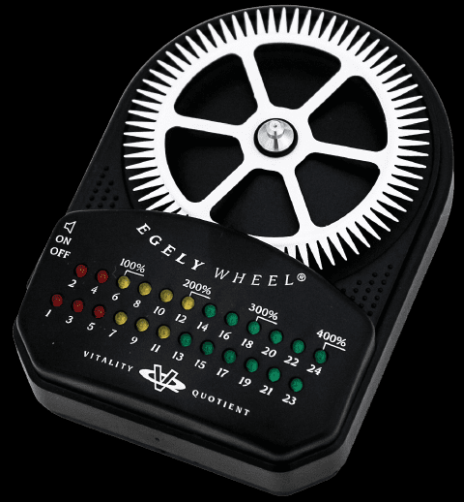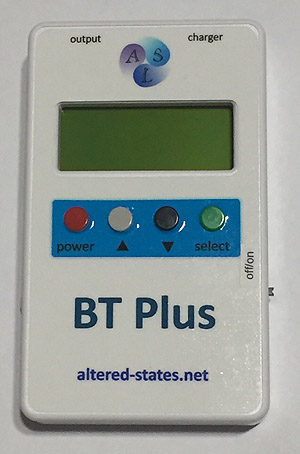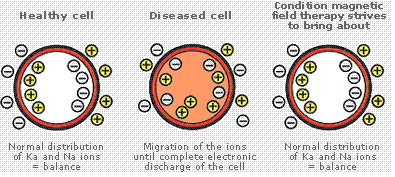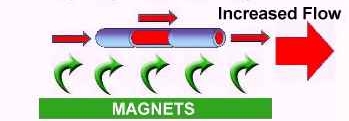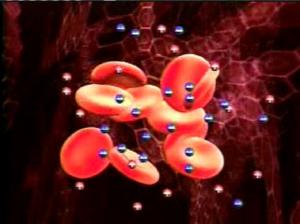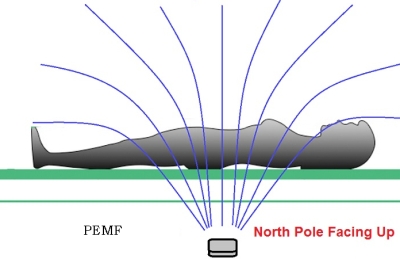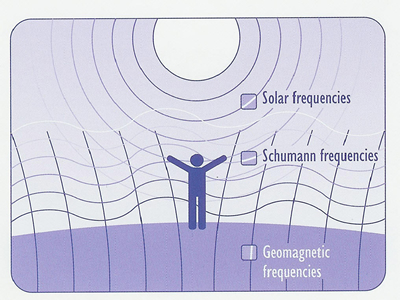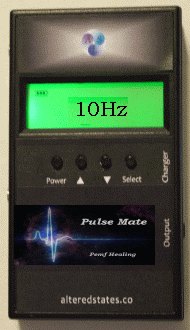Pulse-Mate 2NZ$579.95Approx USD$334.45
Heart disease is the number one cause of death in the western world. The heart is a very electrically dynamic organ. Heart disease includes many causes. These range from vascular disease, electrical conduction defects, muscle problems, valvular effects, congenital defects, infectious problems, trauma and pericardial problems, etc. Other non-direct problems can also affect the heart secondary to other systemic issues, including, but not limited to, hypertension, kidney disease, lung disease, autoimmune diseases, toxicities of various kinds, etc. Finding nonpharmacologic and noninvasive ways of managing heart disease in a safe, effective, nontoxic way is always a goal.
Cardiovascular/Coronary Heart Disease Results
of this study found that the addition of magnetotherapy
to the treatment of patients suffering from ischemic
heart disease and osteochondrosis led to clinical How Do Magnetic Fields Affect Cells?
Increased
Oxygen Supply Improved
Circulation Magnetic fields have been found to significantly affect cardiac function, in addition to effects on a myriad of other body systems and problems. Not all magnetic fields are the same. Different types of magnetic fields may have different effects on the heart.
Doctors have presented papers at the North American Academy of Magnetic Therapy, citing success with magnets in patients with congestive heart failure and various types of cancerous conditions. "Some of the effects of magnets on circulatory function are greater blood vessel dilation and increased oxygenation of tissues. Biomagnetic therapy may also improve vascular resistance and decrease the stickiness of blood platelets. People with a peripheral vascular disorder and arteriosclerosis may therefore benefit from magnetic therapy. Biomagnetic therapy may also undo blockages throughout the body, such as in the vessels of the lower extremities, the arteries in the neck, and the blood vessels in the hands and arms. By opening up a blockage in the heart, magnets may help prevent or improve ischemic heart disease, angina, and heart attacks."
"Hypertensive patients are affected positively, depending on the function of the heart before magnetic treatment. People with normal functioning hearts just have their vascular resistance lowered. EMFs normalize heart function and circulation in patients with high BP, and at the same improve circulation. The improvements in systemic vascular tone, as well as lipid metabolism and coronary circulation make MFs very useful treatment for people with the combination of hypertension and ischemic heart disease."
Magnetolaser therapy (MLT) has been studied in single placebo control trial in the treatment of ischemic heart disease patients, with exertional angina and moderately to severely impaired function, post-myocardial infarction. Most had significantly decreased circulation. MLT was applied to 3 tender zones on the chest: in the front over the upper part of the heart and middle of the sternum, and in back between the scapulas to the left of the mid line, for 12 min, 4 min for each exposure zone, daily over 15 days. Work capacity increased in 84% of the MLT group but worsened in the placebo group. The work increased most for patients with functional classes II and III angina. MLT was also useful for patients with conduction disorders, eliminating extra beats in 29% and decreasing them by more than 70% in 32% of cases and stopping paroxysmal atrial fibrillation in 53%. The treatment lasted through the follow-up period of 12 to 16 months. These impressive results show that MLT facilitates adaptation to a physical load, and promotes rearrangement of central hemodynamics and recovery and stabilization of electrical activity of heart cells, safely and simply.
Research indicates that in general, magnetic therapy works because of the electromagnetic nature of the body. Every cell in our body consists of electrically charged particles that are either positive or negative ions. All are directly affected by exposure to external magnetic fields.;
PULSED ELECTRO MAGNET FIELDS (PEMF) can affect the body at both microscopic and at overall levels. If the PEMF can be placed to influence a section of blood vessel carrying the fluid flow, then the flow at that place will be improved locally and there will be an improvement in the alignment of the molecules,
PEMF and NASA Research
"The most effective electromagnetic field for repair of trauma was squarewave with a rapid rate of change (dB/dt) which saw cell growth increased up to4.0 times." They further noted that "slowly varying (millisecond pulse, sine wave) ornon varying DC (CW lasers, magnets) had little to no effect."
Final Recommendation: "One may use square wave EM fields with rapid rateof change for": • repairing traumatized tissues • moderating some neurodegenerative diseases • developing tissues for transplantation I have thought for a long time that electromagnetic energy is a form of human life force - just as it is for the universe.
At the University of Giessen scientists successfully proved that even magnetic fields of the lowest intensity (in the picotesla range) have an undeniable effect on the well-being of humans. Similarly, the natural phenomenon of weather systems is an example of the effects of even low intensity magnetic fields 10HZ "In 1989 David Hood found chronic (30+ days) 10 Hz stimulation TRIPLED two CRITICAL enzymes used during final stages of cell respiration. Citrate-synthase the regulator of the Krebs cycle and cytochrome-c-oxidase. which is critical in the electron transport chain. Hood concluded this was due to similarly increased mitochondrial ribonucleic acid (mtRNA).
Magnetic fields can penetrate most solid objects
In 2003 NASA-Goodwin found 10 Hz square wave stimulation caused neural tissue regeneration @ 4x baseline, w/ better 3-D orientation; cell DNA signature turned - OFF - 120+ sets of maturation genes and turned - ON - 120+ sets of developmental genes. Over 100 sets of nucleic DNA reverted from maturation to developmental. NASA didn't dig deep enough to explain why cell regeneration QUADRUPLED under 10 Hz pulsed electromagnetic field (PEMF) or why the genetic effects occurred ONLY at 10 Hz pulsed electromagnetic field (PEMF). However moreATP explains very well based upon the work of David Hood and the efficient demonstration by James Tong below.
There are 40,000 sensory neurons relaying information to the brain from the heart leading researchers to call the heart the "little brain" and to coin the field as neurocardiology. In 2007 James Tong DOUBLED mitochondrial density at the nerve synapse but TRIPLED nerve synapse energy utilizing 10 Hz stimulation. These synergistic changes took only 5 minutes to manifest. It is prudent to consider Tong fist stimulated at 1/2 Hz for just two minutes and both mitochondrial density and nerve junction energy parameters fell by 20%. However within 5 minutes at 10 Hz both measurements soared. Compare mitochondrial DENSITY of unstimulated mitochondria (white circles) w/ 10 Hz stimulated mitochondria (black circles); compare TOTAL ENERGY at synapse junction unstimulated (white circles) w/ 10 Hz stimulated (black circles). Mitochondrial density change=2x+ and Synapse Energy change=3x+ so each mitochondria increased its energy production by 50% within 5 minutes"
Having healthy cells is not a passive process. Active, regular tuning-up of our cells is not only feasible, but also necessary to slow aging and reduce the risk of cell dysfunction. We are, after all, only as healthy as our cells. Imperceptible cell dysfunction that is not corrected early can lead to disease. Fine-tuning can be done daily in only minutes, using pulsed electromagnetic fields (PEMFs). In addition, when there is a known imbalance (when symptoms are present) or there is a known disease or condition, PEMF treatments, used either alone or along with other therapies, can often help cells rebalance dysfunction faster.
If you have one of our rife machine option 2h-7h you will not need the pulsemate as your unitl is able to acces the desired frequencies and can be used with the magnacoil, for pemf
iPods placed within 2 inches of implanted
pacemakers monitored via the telemetry wand Not to be used with pacemakers Heart Disease Some interesting facts Results of this study found that the addition of magnetotherapy to the treatment of patients suffering from ischemic heart disease and osteochondrosis led to clinical improvements. I. Rodin, et al., “Use of Low-Intensity Eddy Magnetic Field in the Treatment of Patients with Skin Lymphomas,” Voen Med Zh, 317(12), 1996, . 32-34. Results of this study involving 23 parasystolic children found that low-frequency magnetic field exposure improved humoral and cellular processes involved in the regulation of cardiac rhythm. M.A. Dudchenko, et al., “The Effect of Combined Treatment with the Use of Magnetotherapy on the Systemic Hemodynamics of Patients with Ischemic Heart Disease and Spinal Osteochondrosis,”Lik Sprava, (5), May 1992, . 40-43. Results of this study showed exposure to low-frequency alternating magnetic fields had beneficial effects in children with primary arterial hypertension, as seen in the attenuation of sympathetic and vagotonic symptoms. Y.B. Kirillov, et al., “Magnetotherapy in Obliterating Vascular Diseases of the Lower Extremities,” Vopr Kurortol Fizioter Lech Fiz Kult, (3), May-June 1992, . 14-17. This study demonstrated that traveling pulsed magnetic field and magnetic laser treatment produced beneficial effects in patients suffering from the initial stages of essential hypertension. V.S. Zadionchenko, et al., “Prognostic Criteria of the Efficacy of Magnetic and Magnetic-laser Therapy in Patients with the Initial Stages of Hypertension,” Vopr Kurortol Fizioter Lech Fiz Kult, (1),January-February 1997, . 8-11. In this article, the authors propose a new approach to treating atherosclerosis through the alteration of biophysical properties both intracellularly and extracellularly. Citing their own preliminary data, they suggest atherosclerotic lesions might be selectively resolved without harming normal blood vessels allowing the lesions to take up the magnetically excitable submicron particles and then applying an external alternating electromagnetic field. R.T. Gordon & D. Gordon, “Selective Resolution of Plaques and Treatment of Atherosclerosis Biophysical Alteration of “Cellular” and “Intracellular” Properties,” Medical Hypotheses, 7(2), February 1981, . 217-229. This study examined the effects of constant MKM2-1 magnets on essential hypertension patients. Results indicated the treatment decreased arterial pressure in stage II patients, with magnetotherapy being shown to produce beneficial effects on the central hemodynamics and microcirculation. S.G. Ivanov, et al., “The Magnetotherapy of Hypertension Patients,” Ter Arkh, 62(9), Results from several recent studies conducted the author are reviewed. Conclusions are that pulsed electromagnetic fields exhibit protective effects against necrosis from acute ischemia in rats, cerebral infarcts in rabbits, and myocardium infarcts in rats. R. Cadossi, “Protective Effect of Electromagnetic Field Exposure on Acute Soft Tissue Ischaemic Injury,” Second World Congress for Electricity and Magnetism in Biology and Medicine, 8-13 June 1997, Bologna, Italy. This study examined the effects high frequency electromagnetic radiation (EHF EMR) in 93 patients suffering ischemic heart disease. EHF treatment consisted of 10 to 15 exposures of the lower end of the sternum from a ‘Yav’-1-7,1 device. Treatment was performed five times weekly for a total of 30 minutes per day, with drug therapy being maintained during this period. Positive results tended to occur after 5 to 6 treatment sessions, with a good or satisfactory response being reported in 82 of 93 patients, and lasting as long as 11 months after hospital release. I.E. Ganelina, et al., “Electromagnetic Radiation of Extremely High Frequencies in Complex Therapy for Severe Stenocardia,” Millimetrovie Volni v Biologii I Meditcine, (4), 1994, . 17-21. In this study, 30 myocardial infarction patients received millimeter-wave (MW) therapy in the form of 10 exposures of 30 minutes per day, with a 2-day interruption after the fifth exposure. Patients continued conventional drug treatment during the MW therapy period. Better results were seen in those patients exposed to the MW therapy relative to an equal number of patients receiving conventional treatment only. N.N. Naumcheva, “Effect of Millimeter Waves on Ischemic Heart Disease Patients,” Millimetrovie Volni v Biologii I Meditcine, (3), 1994, . 62-67. Results of this placebo-controlled study demonstrated a 76-percent effectiveness rate for running impulse magnetic field therapy in a group of arterial hypertensive patients. Treatment consisted of two 25-minute exposures per day over a period of 10-20 total exposures, at frequencies of 10 or 100 Hz and magnetic field intensity of 3 or 10 mT. L.L.Orlov, et al., ” Indications for Using a New Magnetotherapeutic Method in Arterial Hypertension,” Soviet Medicine, (8), 1991, . 23-24. This study examined the efficacy of the reinfusion of autologous blood following magnetic field exposure in hypertensive patients. Positive effects were found in 92 percent of patients receiving the treatment. I.G. Alizade, et al., “Magnetic Treatment of Autologous Blood in the Combined Therapy of Hypertensive Patients,” Vopr Kurortol Fizioter Lech Fiz Kult, (1), 1994, . 32-33 This double-blind, placebo-controlled study examined the effects of magnetotherapy in patients suffering from first-or second-stage hypertension. A magnetic field of 50 Hz, 15-25 mT was applied to acupuncture points He-Gu and Shen’-Men for 15-20 seconds per day for a total of 9-10 days. Results: The treatment improved headaches in 88 percent of patients, dizziness in 89 percent, and irritability in 88 percent. In general, 95 percent of hypertensive patients experienced beneficial effects from the treatment, and the morbidity rate decreased twofold following one course extended over a period of 5-6 months. E.V. Rolovlev, “Treatment of Essential Hypertension Patients an Alternating Magnetic Field Puncture,” All-Union Symposium: Laser and Magnetic Therapy in Experimental and Clinical Studies, June 16-18, 1993, Obninsk, Kaluga Region, Russia, . 221-223. This study examined the effects of low-frequency alternating magnetic fields in patients suffering from arteriosclerosis or osteoarthrosis deformans. Treatment involved 10-15 minute daily leg exposures over a total of 15 days. Results showed the treatment to be effective in 80 percent of arteriosclerosis patients and 70 percent of those with osteoarthrosis formans. A.G. Kakulia, “The Use of Sonic Band Magnetic Fields in Various Diseases,” Vopr Kurortol Fizioter Lech Fiz Kult, 3,1982, . 18-21. This study examined the effects of low-frequency magnetic fields (25 mT) in patients suffering atherosclerotic encephalopathy. Treatment involved 10-15 minute daily exposures over a total of 10-15 applications. Results showed clinical improvements with respect to chest pain, vertigo, headache, and other symptoms. S.S. Gabrielian, et al., “Use of Low-Frequency Magnetic Fields in the Treatment of Patients with Atherosclerotic Encephalopathy,” Vopr Kurortol Fizioter Lech Fiz Kult, 3, 1987, . 36-39. Chronic Venous Insufficiency This study examined the effects of alternating magnetic fields (15-20 minutes per day over a period of 20 days) in patients suffering from chronic venous insufficiency, varicose veins, and trophic shin ulcers. Results showed good effects in 236 of the 271 patients receiving the treatment. Thirty-four patients reported satisfactory effects. Only one patient experienced no effects. E.I. Pasynkov, et al., “Therapeutic Use of Alternating Magnetic Field in the Treatment of Patients with Chronic Diseases of the Veins of the Lower Limbs,” Vopr Kurortol Fizioter Lech Fiz Kult, 5,1976, . 16-19. This review article notes that magnetotherapy in a variety of forms has been successfully used in the treatment of chronic venous insufficiency and is a commonly used physical therapy for the condition. A.P. Dovganiuk, “Balneologic and Physical Therapy of Chronic Venous Insufficiency of Extremities,” Vopr Kurortol Fizioter Lech Fiz Kult, 2, 1995, . 48- 49. This study examined the effects of magnetic fields in patients suffering from vessel obliteration diseases of the legs. Treatment consisted of 15- 20 whole body exposures (0.5-5 mT, 1-2 Hz) lasting 15-20 minutes each. Results showed treatment led to a significant reduction in the number of patients experiencing leg pain while at rest. Among patients previously unable to walk a 500-m distance, 52 percent were able to complete the distance following treatment. Circulation improved in 75-82 percent of patients. Y.B. Kirillov, et al., “Magnetotherapy for Obliterative Disease of the Vessels of the Legs,” Vopr Kurortol Fizioter Lech Fiz Kult, 3, 1992, .. 14-17. "Early in the course of use of MFs in patients, there are changes in ECGs to a lower wave size pattern, sinus rhythm and extra beats, and a decrease in heart rate. With continuing magnetotherapy, these changes disappear and cardiovascular function is improved. This is common with MF therapy. Meanwhile, there may be temporary worsening while repair and rebalancing is happening, with the outcome being more normal function and health." BTPlus 1 x small coil 1 x TMS unit |
Your IP Address is: 18.223.237.176
Copyright © 2025 Altered States. Powered by Zen Cart

